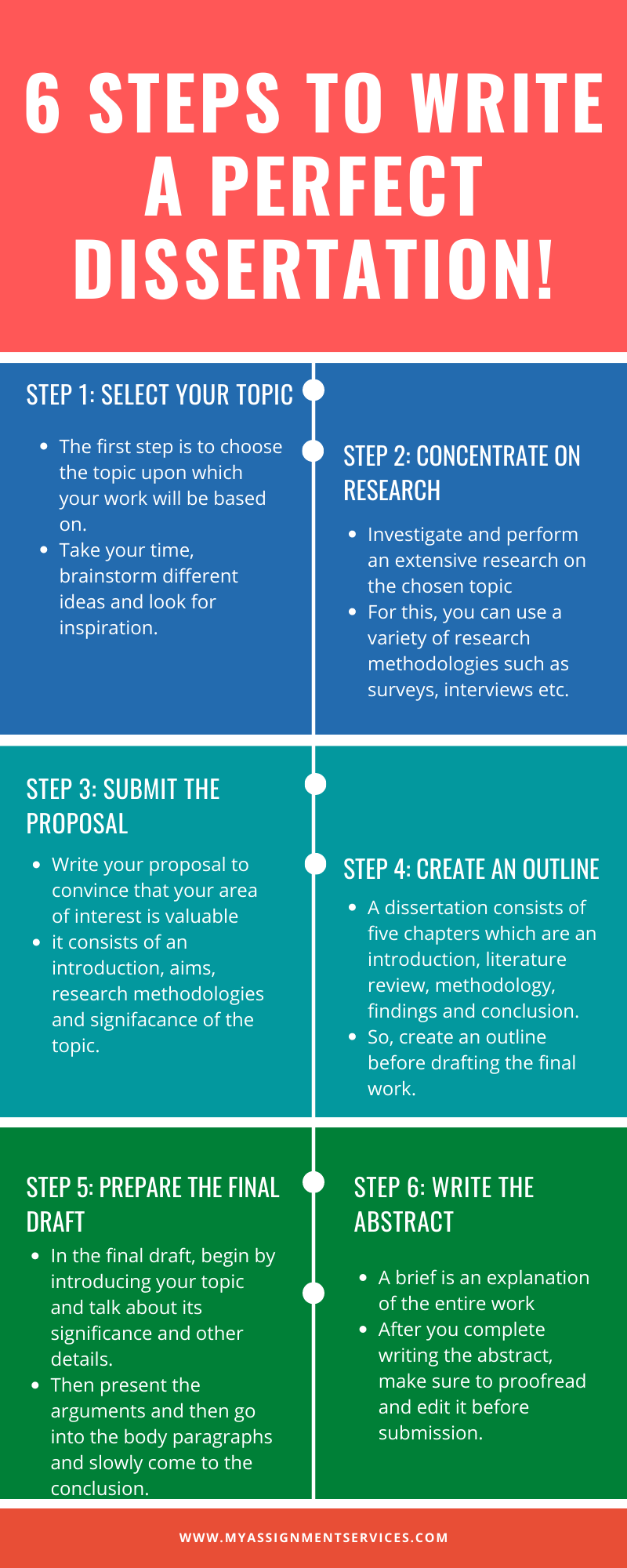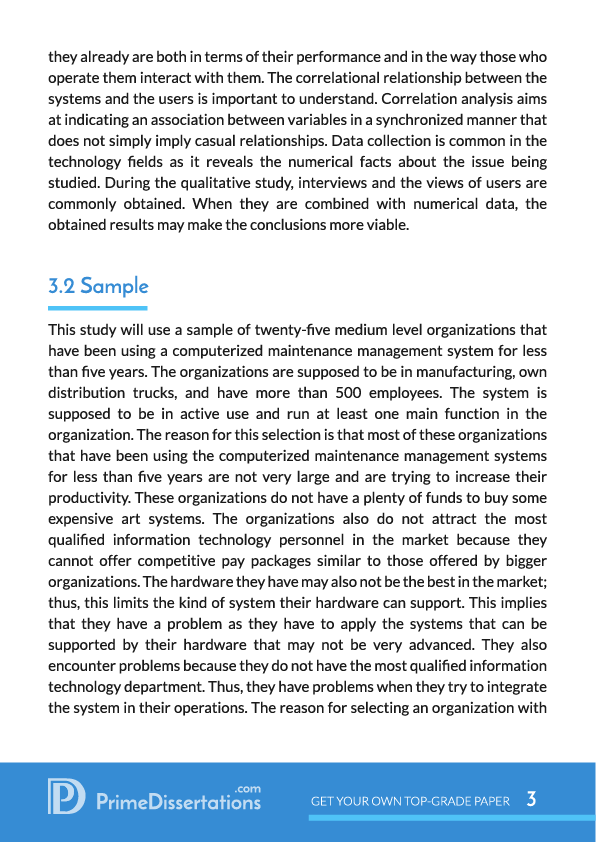
Write in the past tense. In a dissertation proposal, the methodology is written in the future tense (e.g. “The research design will be ”). However, when you come to write the methodology for the dissertation, this research has already been completed, so the methodology should be written in the past tense (e.g Feb 25, · How to write a methodology Step 1: Explain your methodological approach. Begin by introducing your overall approach to the research. What problem Step 2: Describe your methods of data collection and/or selection. Once you have introduced your overall methodological Oct 10, · You can significantly strengthen the justification you provide for your dissertation methodology by referring back to your literature review and reminding your reader of conclusions you've drawn – and if you're feeling really confident you can gently hint to your readers that they agreed with you, using a formulation like, "As we have seen, method X is extremely useful for approaching Estimated Reading Time: 12 mins
How to Write Methodology | A Step-by-Step Guide
Published on 25 February by Shona McCombes, how to write methodology for dissertation. Revised on 12 June In your dissertation or thesis, you will have to discuss the methods you used to undertake your research.
The methodology or methods section explains what you did and how you did it, allowing readers to evaluate the reliability and validity of your research. It should include:. The methodology section should generally be written in the past tense. Begin by introducing your overall approach to the research. What how to write methodology for dissertation or question did you investigate, and what kind of data did you need to answer it?
Depending on your discipline and approach, you might also begin with a discussion of the rationale and assumptions underpinning your methodology. In a quantitative experimental study, you might aim to produce generalisable knowledge about the causes of a phenomenon.
Valid research requires a carefully designed study with controlled variables that can be replicated by other researchers.
In a qualitative participant observation, you might aim to produce ethnographic knowledge about the behaviours, social structures and shared beliefs of a specific group of people. As this methodology is less controlled and more interpretive, you will need to reflect on your position as researcher, taking into account how your participation and perception might have influenced the results.
Once you have introduced your overall methodological approach, you should give full details of the methods you used to conduct the research. Outline the tools, procedures and materials you used to gather data, and the criteria you used to select participants or sources. Surveys Describe where, how to write methodology for dissertation, when and how the survey was conducted. You might want to include the full questionnaire as an appendix so that your reader can see exactly what data was collected.
Experiments Give full details of the tools, techniques and procedures you used to conduct the experiment. In experimental research, it is especially important to give enough detail for another researcher to reproduce your results, how to write methodology for dissertation. Existing data Explain how you gathered and selected material such as publications or archival data for inclusion in your analysis.
The survey consisted of 5 multiple-choice questions and 10 questions that the respondents had to answer with a 7-point Lickert scale. The aim was to conduct the survey with customers of Company X on the company premises in The Hague from July between and A customer was defined as a person who had purchased a product from Company X on the day of questioning.
Participants were given 5 minutes to fill in the survey anonymously, and customers responded. Because not all surveys were fully completed, survey results were included in the analysis. Interviews or focus groups Describe where, when and how the interviews were conducted. Participant observation Describe where, when and how you conducted the observation. Existing data Explain how you selected case study materials such as texts or images for the focus of your analysis.
In order to gain a better insight into the possibilities for improvement of the product range, semi-structured interviews were conducted with 8 returning customers from the main target group of Company X. A returning customer was defined as someone who usually bought products at least twice a week from Company X.
The surveys were used to select returning customer participants who belonged to the target group years old. Interviews were conducted in a small office next to the cash register, and lasted approximately 20 minutes each. Answers were recorded by note-taking, and seven interviews were also filmed with consent. One interviewee preferred not to be filmed. Learn more. Next, you should indicate how you processed and analysed the data. Avoid going into too much detail — y ou should not start presenting or discussing any of your results at this stage.
In quantitative research, your analysis will be based on numbers. In the how to write methodology for dissertation section you might include:. Before analysis the gathered data was prepared.
The dataset was checked for missing data and outliers, how to write methodology for dissertation. The data was then analysed using statistical software SPSS. In qualitative research, your analysis will be based on language, images and observations. Methods might include:. The interviews were transcribed and open coded to categorise key themes and identify patterns. Your methodology should make the case for why you chose these particular methods, especially if you did not take the most standard approach to your topic.
Discuss why other methods were not suitable for your objectives, and show how this approach contributes new knowledge or understanding. You can acknowledge limitations or weaknesses in the approach you chose, but justify why these were how to write methodology for dissertation by the strengths.
Remember that your aim is not just to describe your methods, but to show how and why you applied them and to demonstrate that your research was rigorously conducted. The methodology section should clearly show why your methods suit your objectives and convince the reader that you chose the best possible approach to answering your problem statement and research questions.
Throughout the section, relate your choices back to the central purpose of your dissertation, how to write methodology for dissertation. But if you take an approach that is less common in your field, you might need to explain and justify your methodological choices. In either case, how to write methodology for dissertation, your methodology should be a clear, well-structured text that makes an argument for your approach, not just a list of technical details and procedures.
If you encountered difficulties in collecting or analysing data, explain how you dealt with them. Show how you minimised the impact of any unexpected obstacles.
Pre-empt any major critiques of your approach and demonstrate that you made the research as rigorous as possible, how to write methodology for dissertation. Methodology refers to the overarching strategy and rationale of your research. Developing your methodology involves studying the research methods used in your field and the theories or principles that underpin them, in order to choose the approach that best matches your objectives.
Methods are the specific tools and procedures you use to collect and analyse data e. interviews, experimentshow to write methodology for dissertation, surveysstatistical tests. In a dissertation or scientific paper, the methodology chapter or methods section comes after the introduction and before the resultsdiscussion and conclusion.
Depending on the length and type of document, you might also include a literature review or theoretical framework before the methodology. Quantitative research deals with numbers and statistics, while qualitative research deals with words and meanings. Quantitative methods allow you to test a hypothesis by systematically collecting and analyzing data, while qualitative methods allow you to explore ideas and experiences in depth.
A sample is a subset of individuals from a larger population. Sampling means selecting the group that you will actually collect data from in your research. For example, if you are researching the opinions of students in your university, you could survey a sample of students.
Statistical sampling allows you to test a hypothesis about the characteristics of a population. There are various sampling methods you can use to ensure that your sample is representative of the population as a whole. Thank you. Very useful i was struggling but with your help how to write methodology for dissertation think i can write my methodlogy now. Should we be using first person for this part? Constantly saying 'the researcher' feels a bit weird. It depends on the discipline, but most fields nowadays tend to accept the use of first-person pronounsespecially in the methodology section.
If you're unsure, though, it's best to check with your supervisor. This is really helpful and accessible but there is no mention of paradigms and philosophical stances which I thought need to underpin the methodology. Is this right? Really useful guide for writing a methodology. Thank you for how to write methodology for dissertation the trouble to write and post this.
An innovative new tool that checks your APA citations with AI software. Say goodbye to inaccurate citations! Have a thesis expert improve your writing. Check your thesis for plagiarism in 10 minutes. Do the check. Generate your APA citations for free! APA Citation Generator. Home Knowledge Base Dissertation How to write a methodology. How to write a methodology Published on 25 February by Shona McCombes.
Quantitative methods example The survey consisted of 5 multiple-choice questions and 10 questions that the respondents had to answer with a 7-point Lickert scale.
Qualitative methods example In order to gain a better insight into the possibilities for improvement of the product range, semi-structured interviews were conducted with 8 returning customers from the main target group of Company X. Quantitative methods example Before analysis the gathered data was prepared. Qualitative methods example The interviews were transcribed and open coded to categorise key themes and identify patterns. Where does the methodology section go? What is sampling?
Is this article helpful? Shona McCombes Shona has a bachelor's and two master's degrees, so she's an expert at writing a great thesis. She has also worked as an editor and teacher, working with students at all different levels to improve their academic writing. Other students also liked.
Writing a Methodology for Literature Review
, time: 9:27How to Write the Methodology for a Dissertation | Ivory Research

Oct 10, · You can significantly strengthen the justification you provide for your dissertation methodology by referring back to your literature review and reminding your reader of conclusions you've drawn – and if you're feeling really confident you can gently hint to your readers that they agreed with you, using a formulation like, "As we have seen, method X is extremely useful for approaching Estimated Reading Time: 12 mins Write in the past tense. In a dissertation proposal, the methodology is written in the future tense (e.g. “The research design will be ”). However, when you come to write the methodology for the dissertation, this research has already been completed, so the methodology should be written in the past tense (e.g Feb 25, · How to write a methodology Step 1: Explain your methodological approach. Begin by introducing your overall approach to the research. What problem Step 2: Describe your methods of data collection and/or selection. Once you have introduced your overall methodological
No comments:
Post a Comment